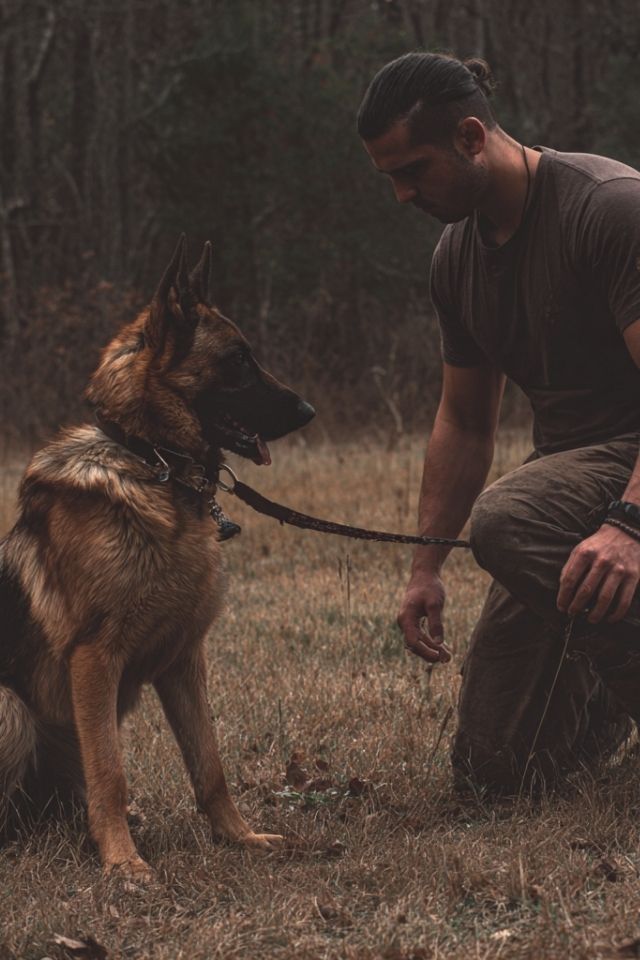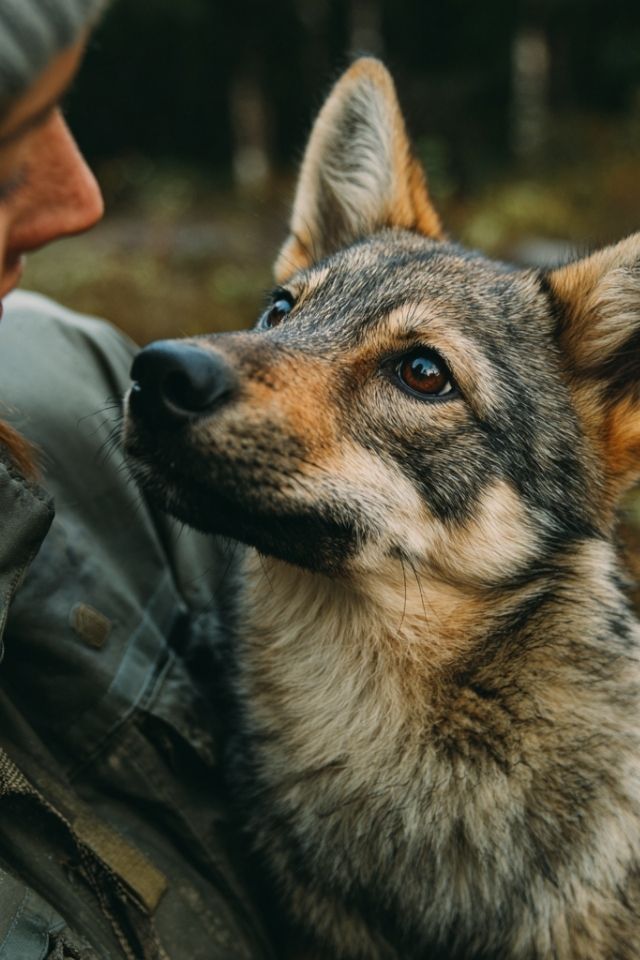A Revolution Written in Pawprints
Picture this: It’s 5:47 AM in a small apartment in Tokyo. A Shiba Inu named Koji sits perfectly still, eyes locked on his human’s face, waiting for the release word that will send him bounding toward his breakfast bowl. At the exact same moment, halfway across the world in New York, a Golden Retriever named Maple struggles with the same “wait” command, her entire body vibrating with barely contained excitement, tail sweeping the floor in anticipation.
What if I told you that these two moments – and millions like them – are no longer isolated experiences lost to time? They’re becoming part of something extraordinary: a vast tapestry of understanding woven from the digital threads of countless training sessions, each one teaching us something profound about how dogs truly learn, love, and connect with us.
In this age where our phones remember our steps and our watches know our heartbeats, our dogs are finally being heard in a language we can measure, analyze, and understand. Not through words, but through patterns that emerge when millions of training moments converge into a single, breathtaking revelation: every frustrated sigh, every breakthrough moment, every tail wag of success is part of a larger story about the NeuroBond between human and canine. 🐾
The Symphony of Learning
When Time Becomes Your Teacher
There’s a rhythm to how dogs learn, as predictable as the seasons yet as unique as each individual soul. Sarah discovered this with her Border Collie, Echo, when she started logging their training sessions in an app, not knowing she was contributing to a revolution in understanding.
Week one felt like magic – Echo grasped “spin” in just twelve repetitions, his body flowing into the movement as if he’d always known it. Sarah’s heart soared. But then came week three, and suddenly Echo seemed to forget everything. The spin became a sit, the sit became a confused stare. Sarah wondered if she’d imagined the early progress.
What Sarah didn’t know was that Echo’s journey was following an ancient pattern, one that millions of dogs have traced before him. The data whispers its secrets: that frustrating plateau isn’t failure – it’s consolidation. It’s Echo’s brain carefully filing away the learning, creating neural pathways that will last a lifetime. Like a river that seems to disappear underground only to emerge stronger downstream, learning dives deep during these quiet weeks, doing its most important work in the darkness.
The numbers tell us that this journey typically unfolds in three acts: the honeymoon of quick progress, the valley of apparent forgetfulness, and finally, the summit of mastery. But knowing this intellectually is different from living it. When you’re standing in your backyard at dusk, watching your dog finally, truly understand what you’ve been teaching for weeks, you’re not thinking about data points. You’re feeling the Invisible Leash strengthen, that ineffable connection that transcends words and commands.
The Breed Song Within
Every dog carries within them the echoes of their ancestors – the Border Collie with generations of Scottish shepherds in their bones, the Beagle with centuries of hunters whispering through their nose. The data has given us something remarkable: the ability to hear these ancestral songs and work with them rather than against them.
Consider Marcus and his Chow Chow, Empress. Traditional training methods left them both frustrated. Empress would stare at him with those deep-set eyes, as if to say, “I understand you perfectly; I simply choose not to comply.” The breakthrough came when Marcus discovered what millions of data points had revealed: ancient breeds like Empress don’t learn like eager-to-please Labradors. They need shorter sessions, more patience, different motivations. They’re not stubborn; they’re discerning.
When Marcus shifted to five-minute sessions focused on partnership rather than obedience, Empress transformed. She began offering behaviors, testing boundaries with intelligence rather than defiance. The data had shown him the path, but the journey – that was uniquely theirs.
The Human Heart of the Equation
Your Energy, Their Universe
Here’s what the algorithms discovered that perhaps our hearts always knew: you are the most important variable in your dog’s learning equation. Not the treats in your pocket, not the clicker in your hand, not even the method you choose. You.
The data speaks in percentages and correlations, but the truth lives in moments like these: When Jennifer’s anxiety about her reactive German Shepherd, Thor, peaked during walks, Thor’s ability to learn plummeted. The wearable sensors showed his heart rate spiking before they even left the house, responding to Jennifer’s tension like a seismograph detecting distant earthquakes. But when Jennifer learned to breathe, to center herself, to trust in their growing connection, Thor’s entire nervous system shifted. The numbers confirmed what Jennifer felt – her calm became his courage.
This isn’t just about staying positive. It’s about understanding that our dogs exist in an emotional ecosystem where our internal weather becomes theirs. Those 3-4 training sessions per week that show optimal results? They work not because of the frequency, but because they allow both human and dog to approach each moment with fresh energy, unclouded by yesterday’s frustrations or tomorrow’s anxieties.
The data reveals something beautiful: morning sessions outperform evening ones not because dogs are “morning creatures,” but because we bring different energy to the dawn. We’re hopeful at sunrise, tired at sunset. Our dogs feel this in their bones. They learn not just our commands but our rhythms, our moods, the subtle electromagnetic field of our emotions. This is the true NeuroBond – not just neurological, but energetic, spiritual even. 🧠
The Hidden Symphony of Stress
When Hearts Speak Louder Than Words
Luna, a rescued Pittie mix, wore a small sensor on her collar during training. Her owner, David, thought he was teaching her to heel. But the device was revealing a different story entirely – a story written in heartbeats and stress hormones, in micro-movements invisible to the human eye.
The data showed that Luna’s heart rate would spike thirty minutes before training even began. Somehow, she knew. Perhaps it was David unconsciously gathering treats, or the subtle shift in his energy as he mentally prepared. But Luna’s body was already flooding with cortisol, that ancient stress hormone that once helped her ancestors survive but now made learning nearly impossible.
This revelation – replicated across millions of dogs – changed everything. It showed us that a dog who “won’t listen” might actually be a dog who can’t listen, not out of defiance but because their amygdala has hijacked their brain, sending them into survival mode where learning simply doesn’t exist.
The solution wasn’t more training but less stress. A ten-minute sniff walk before practice. A few minutes of gentle massage. The transformation was profound – when Luna’s heart rate variability stayed in that golden zone between 50-70 milliseconds, she became a different dog. Not more obedient, but more present. The heel became not a command to obey but a dance to share.
The Three Mountains Every Dog Must Climb
The Recall Riddle
In backyards and dog parks across the world, a universal drama unfolds daily: the call that goes unheeded, the dog who suddenly develops selective deafness the moment the leash comes off. The data tells us this is our greatest collective challenge – 38% of all behavioral concerns center on this single issue. But why?
The answer lives in the gap between what we think we’re teaching and what our dogs are actually learning. When Emma called “Come!” to her Husky, Glacier, in her living room, Glacier learned “move toward Emma when she makes that sound in this room with that carpet under my paws and that smell in the air.” When Emma tried the same command at the dog park, Glacier wasn’t being stubborn – he literally didn’t recognize the cue. The context had changed, and with it, the entire meaning of the word.
This is where Soul Recall transcends mechanical training. It’s not about perfect obedience but about creating a connection so profound that your dog chooses you over everything else – not because they must, but because coming to you feels like coming home.
The Leash as Mirror
Every tight leash tells two stories – one of a dog pulling forward and one of a human holding back. The data reveals that leash reactivity, affecting nearly a third of all dogs, is rarely about aggression. It’s about frustration, fear, or overexcitement compressed into a six-foot radius of tension.
Small dogs, the numbers tell us, are twice as likely to develop this challenge. But look deeper, and you see it’s not about size but about how the world responds to size. Every person who swoops down uninvited, every larger dog who looms overhead – these moments accumulate like sediment until walking becomes a minefield of potential threats.
The solution isn’t in the leash but in the bond. When we shift from controlling to communicating, from restraining to partnering, the leash transforms from a tether into a telegraph wire carrying messages of safety and trust.
The Digital Mirror of Tomorrow
As our devices grow more sophisticated, they’re becoming mirrors that reflect not just what our dogs do but who they are. A collar that reads personality. An app that predicts tomorrow’s training success based on today’s sleep quality. Algorithms that can detect pain before limping begins, anxiety before it blooms into fear.
But here’s the paradox: the more data we gather, the more we confirm what intuitive dog lovers have always known. That every dog is utterly unique while being predictably canine. That love teaches better than logic. That the bond between human and dog transcends anything we can measure.
The millions of data points all converge on a single truth: dogs aren’t problems to be solved but partners to be understood. They’re not learning machines but emotional beings navigating a human world with remarkable grace. Every training session logged, every heartbeat monitored, every behavior tracked is really just another way of saying what we’ve always known – that in teaching our dogs, they inevitably teach us more.
The future isn’t about replacing intuition with algorithms but about using technology to amplify our understanding, to hear what our dogs have been telling us all along. In this vast database of barks and body language, of successes and setbacks, we’re not just collecting data. We’re documenting love stories, millions of them, each one a testament to the enduring mystery and magic of the human-canine bond. 🧡






